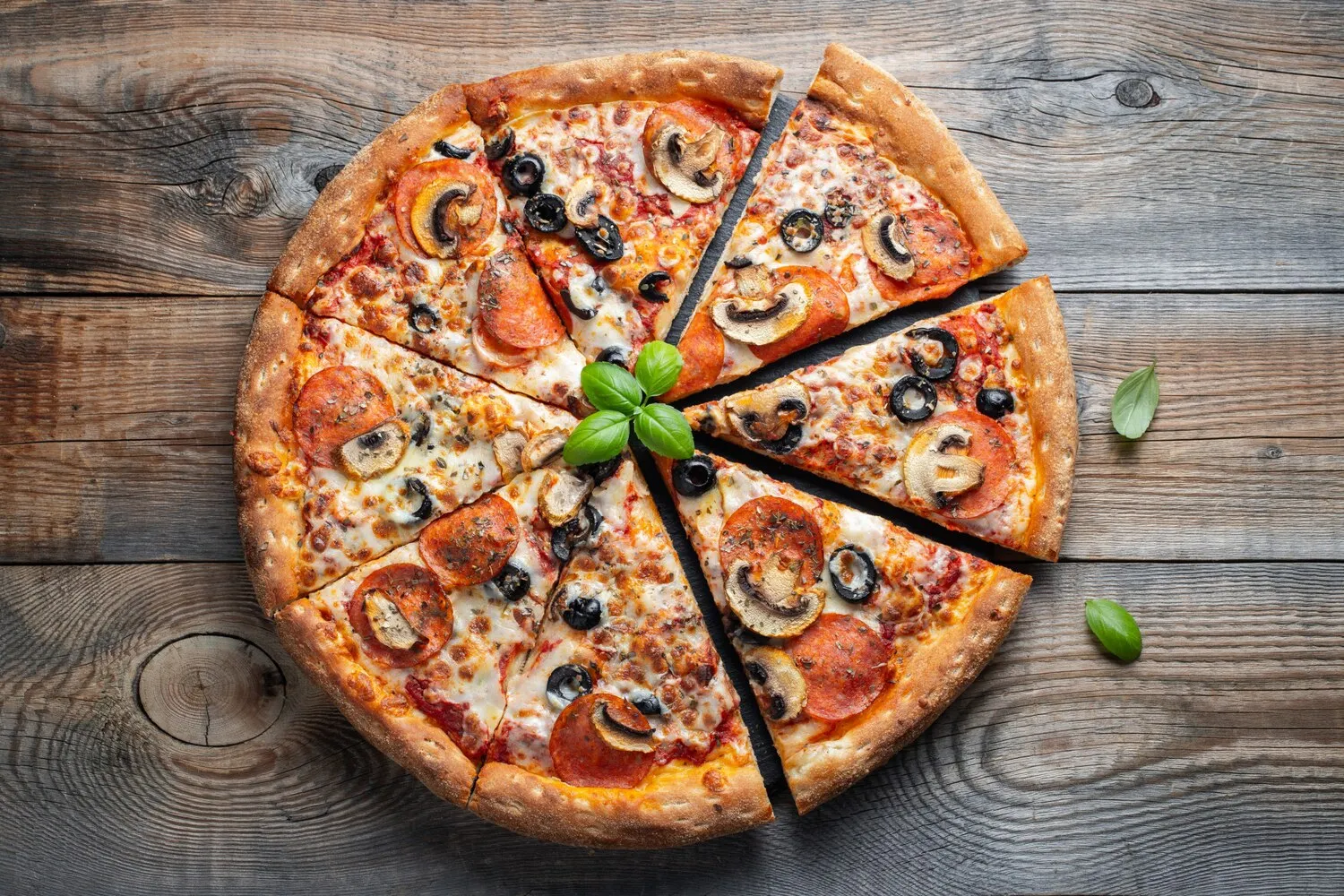
Pizza
Ristorante Pizzeria Fattoria Toccaferro is known for its pizza. Specific types or descriptions not available.
Nutrition Facts
* The % Daily Value (DV) tells you how much a nutrient in a serving of food contributes to a daily diet. 2,000 calories a day is used for general nutrition advice.
Ristorante Pizzeria Fattoria Toccaferro
Pizza's ancestry can be traced back to ancient civilizations that used flatbreads as edible plates. However, the modern pizza, with its defining tomato sauce, originated in Naples, Italy, during the 18th century. It evolved from simple flatbreads sold by street vendors to a culinary staple enjoyed worldwide.
Pizza holds immense cultural significance, particularly in Italy and the United States, where it has become deeply ingrained in the social fabric. It's associated with family gatherings, celebrations, casual meals, and quick bites.
Family Meals
Pizza is often shared among family members, fostering a sense of togetherness and community. Ordering or making pizza is a common activity for weekend dinners or special occasions.
Regional Variations
Different regions have their own unique pizza styles, reflecting local ingredients and culinary traditions. For example, Neapolitan pizza is known for its thin, soft crust and simple toppings, while Chicago-style deep-dish pizza is characterized by its thick, buttery crust and generous amounts of cheese and sauce.
Global Adaptation
Pizza has been adapted and reinterpreted in countless ways around the world, with local ingredients and flavors incorporated into the toppings and even the dough. This adaptability has contributed to its widespread popularity and enduring appeal.
The flavors of pizza are typically a balance of savory, tangy, and herbaceous notes, dependent on toppings. The base dough provides a slightly bready and yeasty taste, while the tomato sauce offers a sweet and acidic counterpoint.
The foundational flavor profile arises from the interplay between the dough (often made with wheat flour, water, yeast, and salt), the tomato sauce (tomatoes, herbs like basil and oregano, garlic, and sometimes a touch of sugar), and the cheese (typically mozzarella, but other cheeses like provolone or parmesan can add different dimensions of flavor). Various toppings like pepperoni, mushrooms, onions, peppers, and olives contribute their distinct tastes and textures to the overall flavor experience.
Dough Preparation
Allowing the dough to rise properly is crucial for achieving a light and airy crust. A slow, cold fermentation (proofing in the refrigerator for 24-72 hours) can enhance the flavor and texture of the dough.
Oven Temperature
A high oven temperature is essential for creating a crispy crust and melting the cheese evenly. Ideally, use the highest temperature your oven can reach or use a pizza stone.
Topping Balance
Avoid overloading the pizza with toppings, as this can make it soggy and difficult to cook evenly. A balanced combination of flavors and textures is key to a delicious pizza.
Explore additional Pizza dishes and restaurants
Explore PizzaDiscover top dining spots and culinary experiences in Pescara.
Explore PescaraLearn more about the food culture, restaurant scene, and culinary heritage of Italy.
Explore Italy